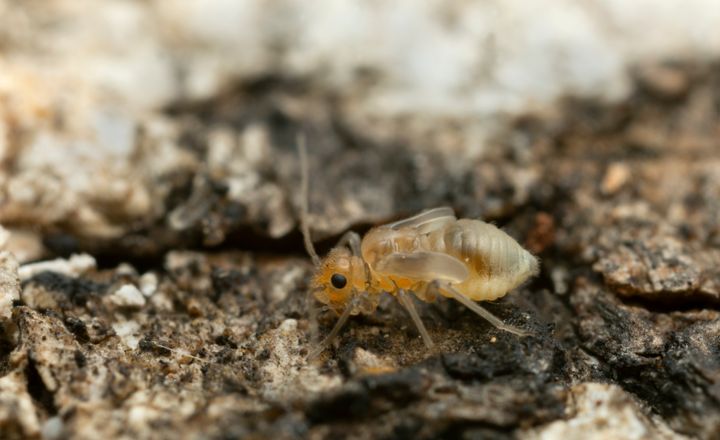
As if bedbugs weren’t enough, it seems we now have another six-legged fiend to contend with; autumn is the season for book lice.
Yep, you read that right ― book lice are set to thrive in the wet, cold conditions of autumn and winter. Also known as psocids, the British Pest Control Association (BCPA) says that they’re “very common.”
“Book lice are a pretty minor pest in the grand scheme of things. Harmless to people, booklice don’t spread disease or cause damage to property,” Professor Adam Hart, ecologist, conservation scientist, entomologist, and the University of Gloucestershire’s professor of Science Communication, told HuffPost UK.
“They can nonetheless contaminate food, and when present in large numbers can cause an infestation that is both hard to get rid of, and can be distressing for people,” he added (it’s me, I’m “people”). So, we thought we’d share how to spot the beasties ― and what to do to get rid of them.
GAH!
I know! The bugs are small and can be hard to spot ― but experts say they look like black spots and happen alongside mould.
Rentokil says that the creatures can be easily identified as black dots which appear on pale walls.
“These tiny black dots, they come in hundreds and hundreds of them… sticking themselves to the bathroom walls, the bedroom walls or even inside the wardrobes,” they say (shudder).
They’re also strongly associated with damp, which is why it’s possible to confuse them with the black spots of mould. Perhaps you’ve got new plaster drying out, maybe you have a leaky pipe, or it could just be a lack of ventilation ― either way, the bugs are always associated with soggy conditions.
Not only do the bugs look a little like mould ― they also actually feed off the stuff. The BCPA says that “They are also believed to feed on microscopic moulds that grow on the glue of book bindings or on damp cardboard, damp food (especially cereals) or on the surfaces close to damp plaster inside buildings, which is very common with brand new houses.”
Oh, lovely.
How can I get rid of them?
Luckily, they’re pretty easy to control. They depend on damp conditions to survive ― so if you remove the damp, you banish the bugs, too.
“They feed on mould, so the key to preventing them, and getting rid of them, is to dry out damp areas of our homes. Good ventilation is key ― they like humid conditions so try to prevent moisture build up in bathrooms and kitchens, and keep an eye on condensation,” Professor Hart told HuffPost UK.
Remove infested items, wipe away visible mould, and (if possible) improve ventilation. “Alternatively, heat the room where they occur to a high temperature as they survive poorly in dry heat,” the BCPA says.
And Avon pest control adds that you should “Keep dry foods in airtight containers in dry, cool, well ventilated conditions. Wiping down cupboards regularly, and leaving them to dry completely before restocking your shelves can be helpful.”
Bear in mind that preventing their presence altogether is next to impossible, and they’re only ever a threat in enormous numbers.
“Booklice are not related to the other insects we call lice and they aren’t interested in feeding on us in any way,” Professor Hart reminds us.
But if you’ve got a very difficult infestation, it might be time to call in the pros.
And with that, I’m just off to rock backwards and forwards trying to forget...